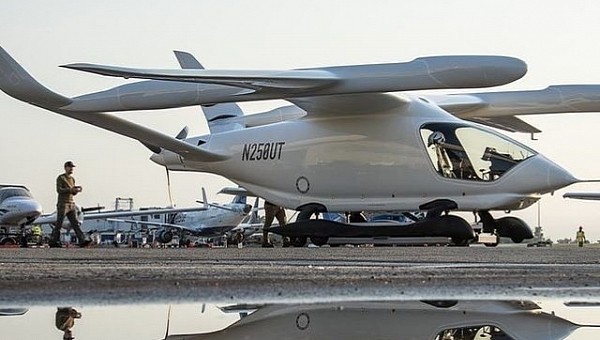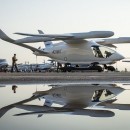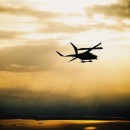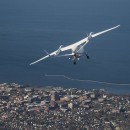We are becoming increasingly anxious to see eVTOLs (electric vertical take-off and landing) in the sky, not just displayed at some air mobility event. It’s going to take time, since there’s no vertiport infrastructure in place yet, but flight tests such as this one mark small, important victories on the way to that.
This summer, Beta Technologies made headlines again, after announcing the successful flight of its Alia-250 eVTOL prototype between two Amazon facilities. The flight was not a premiere for Alia, who had also been successfully tested by the U.S. Air Force, but it came soon after it was announced that Amazon had invested in Beta.
The Vermont-based Beta did not waste time and geared up for another extensive test flight, recently completed. It was a whopping 876-mile (1,410 km) journey from Plattsburgh, New York, to Louisville, Kentucky, Vertical Magazine reports. That was no random destination, but the location of UPS Worldport. That’s because UPS, a Beta customer, asked for the electric aircraft to be relocated there.
As you can imagine, it wasn’t one continuous flight, conducted by just one pilot. The entire journey, taking the Alia prototype over four states (New York, Pennsylvania, Ohio and Kentucky) was completed through several flights, over the course of five days, with two pilots taking turns. But that also included an unexpected hold for snow, in New York.
Also, it’s important to note that the aircraft did not operate in VTOL mode, but was configured as a CTOL (conventional take-off and landing). According to Vertical, Beta is currently operating two prototypes, one as a VTOL and the other as a CTOL. But the feedback from this particular test can also be applied to the VTOL version.
Although testing the aircraft in winter conditions was a bonus, the extensive journey was indeed meant to offer important technical insight. Some of the things that were put to the test included flying in and out of a busy airspace, operating with fewer crew members, and conducting three flights per day.
Even more important than that, according to one of the two pilots, Lochie Ferrier, was testing Beta’s charging technology. According to Ferrier, this is one of the most important pieces of the puzzle, even though it doesn’t get enough attention in the media. Using Beta’s own Charge Cube technology, this charging network was also upgraded over time, with a power increase and a software update, among other things.
The flight for UPS proved to be a great opportunity to confirm these upgrades as well. In addition to working on its production series eVTOL, Beta also has big plans for a charging network across the U.S., which can be used for any eVTOL model, as well as for electric ground vehicles.
The Vermont-based Beta did not waste time and geared up for another extensive test flight, recently completed. It was a whopping 876-mile (1,410 km) journey from Plattsburgh, New York, to Louisville, Kentucky, Vertical Magazine reports. That was no random destination, but the location of UPS Worldport. That’s because UPS, a Beta customer, asked for the electric aircraft to be relocated there.
As you can imagine, it wasn’t one continuous flight, conducted by just one pilot. The entire journey, taking the Alia prototype over four states (New York, Pennsylvania, Ohio and Kentucky) was completed through several flights, over the course of five days, with two pilots taking turns. But that also included an unexpected hold for snow, in New York.
Also, it’s important to note that the aircraft did not operate in VTOL mode, but was configured as a CTOL (conventional take-off and landing). According to Vertical, Beta is currently operating two prototypes, one as a VTOL and the other as a CTOL. But the feedback from this particular test can also be applied to the VTOL version.
Although testing the aircraft in winter conditions was a bonus, the extensive journey was indeed meant to offer important technical insight. Some of the things that were put to the test included flying in and out of a busy airspace, operating with fewer crew members, and conducting three flights per day.
Even more important than that, according to one of the two pilots, Lochie Ferrier, was testing Beta’s charging technology. According to Ferrier, this is one of the most important pieces of the puzzle, even though it doesn’t get enough attention in the media. Using Beta’s own Charge Cube technology, this charging network was also upgraded over time, with a power increase and a software update, among other things.
The flight for UPS proved to be a great opportunity to confirm these upgrades as well. In addition to working on its production series eVTOL, Beta also has big plans for a charging network across the U.S., which can be used for any eVTOL model, as well as for electric ground vehicles.







